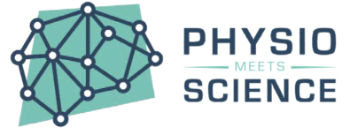Startseite › Netzwerken › Fachliche Themen › Funktionelles Kompartmentsyndrom › Reply To: Funktionelles Kompartmentsyndrom
-
Hallo Nicolai,
dazu vlt. Folgendes:
“Nonoperative Management
There is a lack of robust evidence illustrating the effectiveness of non-operative
management of CECS in the general population [9]. However, some patient populations may
benefit from a trial of non-surgical treatment. Diebal et al studied running techniques and their
effect on pain and disability in CECS [16]. In a case series, they prospectively enrolled ten
hindfoot striker runners who had CECS in the anterior compartment of the leg. Instead of surgical treatment, the patients underwent 6 weeks of forefoot running training. Resting and
postrun compartment pressures, kinematic and kinetic measurements, and self-report
questionnaires were taken before and after 6 weeks of training. Results showed a statistically
significant (p < 0.05) decrease in mean post-run anterior compartment measurements from 78.4
mmHg to 38.4 mmHg after forefoot running training. Running distance also saw statistically
significant increase from 1.4 km before intervention to 4.8 km after intervention. Self-reported
pain scores were lower and two-mile run times were significantly faster after intervention. Pain
and disability remained reduced for up to 1 year, and surgery was avoided in all the patients.
Adopting a forefoot strike while running was shown to be an effective conservative
treatment strategy in runners[17]. In a prospective cohort study, 19 runners with CECS were
enrolled in two intervention arms: supervised, center-based program and a home-based training
program. Both groups received forefoot running training for six weeks and intra-compartmental
pressure (ICP) measurements were performed at rest and post-run. Results showed a statistically
significant increase in running distance, decrease in ICP values, and decrease in pain scores after
intervention. There was no difference in outcomes between patients with a more supervised,
center-based training program and less supervised, home-based training program.
Botulinum toxin A injection has been described as a novel treatment for anterior or
anterolateral chronic exertional compartment syndrome of the leg. [18]. One group of researchers
injected Botulinum toxin A in a total of 25 anterior leg compartments and 17 lateral
compartments in 16 patients with CECS. Intramuscular pressures were measured before the
injection and 3-9 months after injection. Results showed a statistically significant decrease in
compartment pressures in the anterior (63%) and lateral (68%) compartments. Ninety-four
percent of the patients saw complete elimination of pain for up to 9 months. The most common
Downloaded by [Australian Catholic University] at 02:11 28 September 2017
side effect was loss of muscle strength. In 69% of the patients, strength decreased from 4.5 out of
5 to 3.5 (P<0.01) without loss of functionality, which the authors defined as physical and sports
performance.
Based on these results, runners and patients with anterior and lateral CECS of the leg
comprise a special population of patients in whom conservative treatment may be considered
before surgical release [18].”
aus: https://pubmed.ncbi.nlm.nih.gov/28952402/
Generell gibt es leider keine gute Evidenz zu dem Thema….. Die Läufer in der oberen Studie hatten ein anteriores CS. Also nicht ganz übertragbar.
LG Tobias
